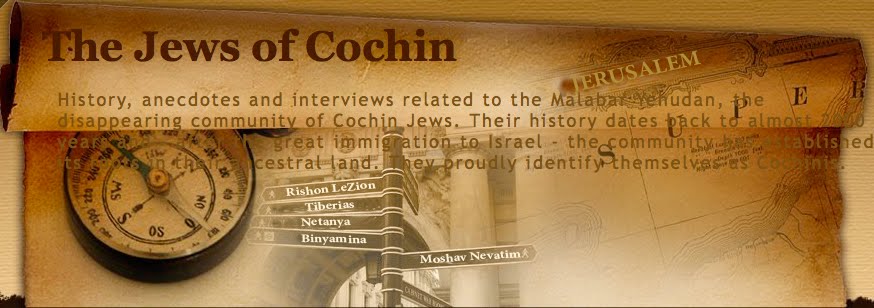 |
| A perspective view of the display in Beit Hatfutsot |
There is a 'Gate of Faith' in Beit Hatfutsot, the Museum of the Jewish People, located within the campus of Tel Aviv Univerisity in the northern suburb of Ramat Aviv.
Recently, I had an opportunity to step through this 'gate' and onto the gallery and come upon the magnificent display of 18 miniature synagogue reproductions from across the Jewish world. (Miniature here means about 5 ft x 4 ft x 4 ft on average).
 |
| The illuminated interior of the model synagogue |
 |
| Another view - with the cut-off wall |
 |
| Picture of interior of the synagogue in Mattanchery |
The Paradesi synagogue is, of course, the oldest functioning synagogue in India and in the Commonwealth.
 |
| View from the back.. |
Beit Hatfutsot is more than a museum. Opened in 1978, under the aegis of Dr. Nahum Goldmann, then President of the World Jewish Congress, the institution soon established a reputation for telling the extraordinary story of the Jewish people using the latest in museum and display technology.
The Israeli Knesset (parliament) passed a law in 2005 defining Beit Hatfutsot as "the National Center for Jewish communities in Israel and around the world".
 |
| The gate is the entrance to the playground |
The core exhibition allows us to go on a virtual journey across "eras and lands of Jewish life, exploring the unique story of Jewish continuity, creativity and unity in diversity".
The exhibition uses murals, reconstructions, dioramas, documentary films and interactive multimedia presentations to present a panorama of the Jewish people.
Beit Hatfutsot also houses a unique geneology centre to trace Jewish family trees (with more than 3 million entries), a Jewih music centre (with Cochini Jewish music CDs as wsell) and The International School for Jewish Peoplehood Studies. (More about the museum in another blog).
Dr. Shalva Weil of the Hebrew University of Jerusalam worked for 10 years as curator at the Beit Hatfutsot in addition to her work at the University. Dr. Weil was instrumental in the creation of the current model of the Pardesi Synagogue - to be more accurate according to plans provided by I. S. Hallegua of Jew Town in Cochin. Hallegua was an engineer. Dr. Weil also curated a small exhibition with photographs by Carmel Berkson on the Jews of the Konkan and later curated a very big exhibition entitled Beyond the Sambatyon: The Myth of the Ten Lost Tribes, featuring Indian Jews, inter alia.
Plans are now well-advanced for a new and bigger Museum of the Jewish People, expected to open in the same premises by early 2014. The new Beit Hatfutsot will celebrate the multiculturalism of Jewish diversity today and focus on an inclusive and pluralistic approach. It is expected to showcase the 4,000 year-old story of the Jewish people – past, present and future - with the theme: A Story Thousands of Years Old - Ever New!
 |
| © All pictures by Bala Menon, 2011. All rights reserved. Please ask for permission to reproduce. |

